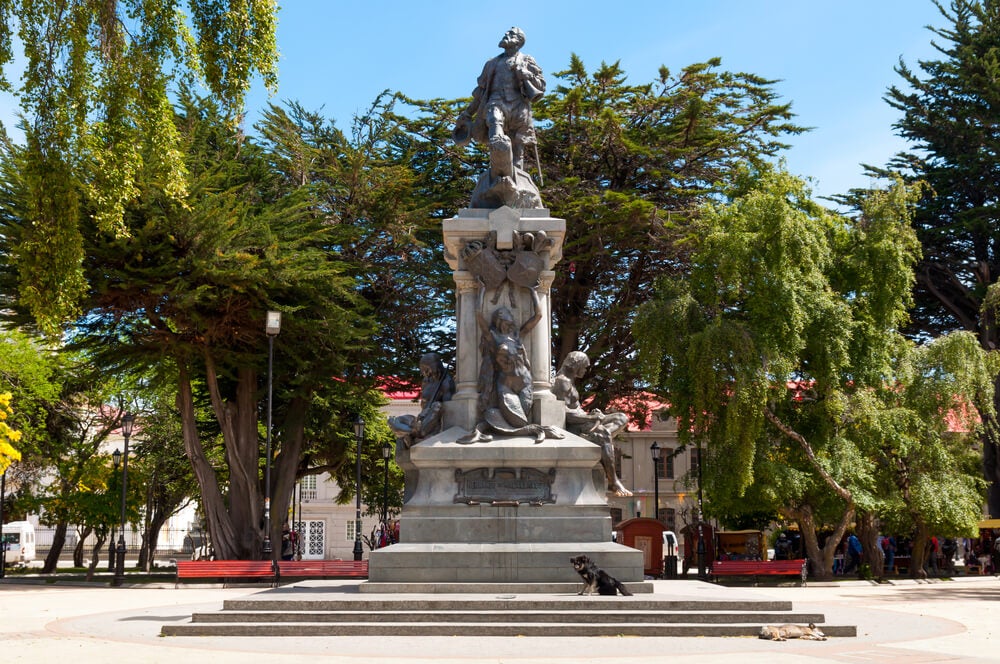Discover the biography of Fern’de Magalhaes, who designed and directed the first circumnavigation of the globe, to make this journey it took a lot of courage and courage, especially since he did not know where the adventure would take him. certainly a great achievement.
Five centuries have passed since this first trip around the world made by Fernao de Magalhaes, what guided him was his intuition and the developed smell of a good navigator.
- No one could say at the time that there was a cross between the Atlantic and the Pacific in South America.
- But something told Ferno that was the case.
“The Church says that the Earth is flat, but I know it is round, because I saw its shadow on the moon. I trust more in a shadow than in the Church. “-Fernao de Magalhaes-
Although Fernao de Magalhaes could not complete this first world tour, there were very few, the only thing that stopped him was death, after a life full of daring adventures and several epic moments.
Ferno de Magalhaes was born in Porto, Portugal, in 1480, the son of nobles and, as such, had a privileged education, in which he devoted himself mainly to the study of cartography and navigation.
At that time he lived in Lisbon, although he became a very young traveler.
At the age of 25 he made a trip to India, then made other trips and, in them, found someone who became his slave throughout his life: Henry of Malacca.
Many believe it was the latter who really made the first round the world since his return to Europe, unlike Magellan.
He then went to Morocco, where he was wounded in the foot during a fight. Back in Portugal, he fell out of favor to King Manuel I. This tension takes him to Spain, to try his luck in the country.
After much effort, he managed to get King Charles I to authorize his trip to India on a path through the West.
On August 10, 1519 Fern-de-Magalhaes began the great adventure of his biography, had five ships under his direction: Trinidad, San Antonio, Concepción, Victoria and Santiago, had a crew of 270 men of different nationalities. they were Portuguese and Basque.
The expedition crossed from North Africa to Sierra Leone, then headed west and reached the coast of what is now Rio de Janeiro, then arrived in Rio de la Plata, which was first confused with the famous passage that believed that Magalhaes existed. . The disappointment was great.
Finally, they arrived in St. Julion’s Bay in the middle of winter and decided to wait with the intention of improving the weather, as the crew was desperate.
The captains of the various ships began a conspiracy against Fernao de Magalhaes, who suppressed her and some officers were released, while others were left to their fate.
In the spring of 1520 they continued their journey and years earlier reached the passage of sleep, there was the road to South Sea, a name with which they knew the Pacific Ocean at the time.
Crossing this immense sea was a torment, but when they got to the other side, a calm sea awaited them. Hence the name of the Pacific Ocean, which has remained to this day, although it is the most furious ocean on the planet.
They say that at that moment, Fernao de Magalhaes cried at the show
The strait, now named Magalhaes, was originally called the Strait of All Saints by Magalhaes himself, sailed north, following the Chilean coast, and then entered the open sea.
The difficulties began again, as food and water ran out, and Antonio Pigafetta, the expedition’s rapporteur, described it as follows:
“The cake we ate was nothing more than a powder full of worms that had devoured all their food. In addition, it had an unbearable fetid smell as it was impregnated with rat urine. The water we drank was rotten and stagnant. In order not to go hungry, we were forced to eat the pieces of leather that covered the mast.
Finally they arrived in the Mariana Islands, there they were able to stock up on food and water, soon departed and found another archipelago, which they named the Philippines after Philip II, king of Spain.
The local indigenous peoples resisted the presence of visitors and fought terrible battles against them, in one of them, Fernao de Magalhaes was killed in 1521.
The feat of completing the journey around the world was left to the surviving crew members, as the death took this amazing traveler before he could complete his great goal.

